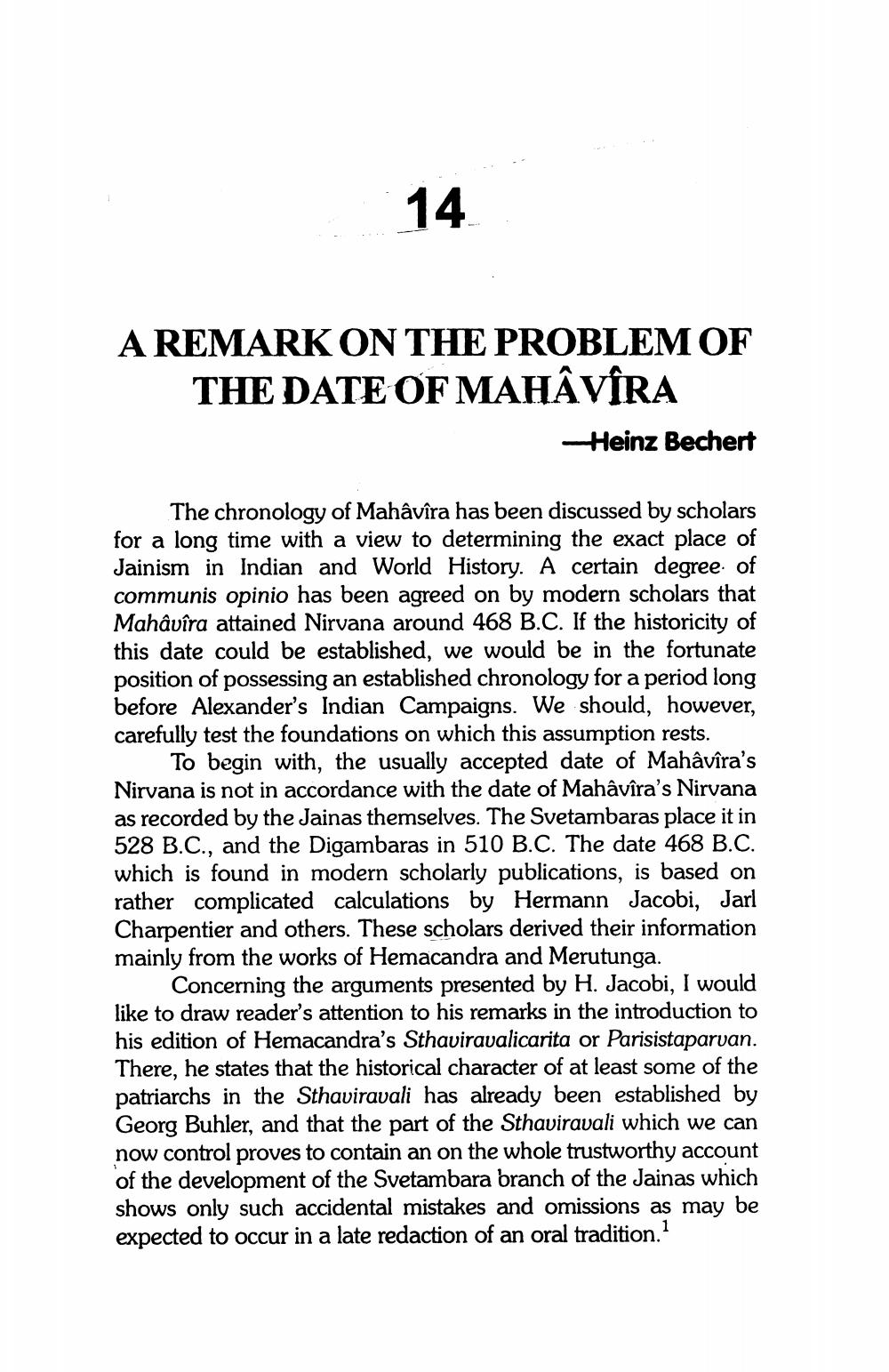________________
14
A REMARK ON THE PROBLEM OF THE DATE OF MAHÂVÎRA
-Heinz Bechert
The chronology of Mahâvîra has been discussed by scholars for a long time with a view to determining the exact place of Jainism in Indian and World History. A certain degree of communis opinio has been agreed on by modern scholars that Mahâvîra attained Nirvana around 468 B.C. If the historicity of this date could be established, we would be in the fortunate position of possessing an established chronology for a period long before Alexander's Indian Campaigns. We should, however, carefully test the foundations on which this assumption rests.
To begin with, the usually accepted date of Mahâvîra's Nirvana is not in accordance with the date of Mahâvîra's Nirvana as recorded by the Jainas themselves. The Svetambaras place it in 528 B.C., and the Digambaras in 510 B.C. The date 468 B.C. which is found in modern scholarly publications, is based on rather complicated calculations by Hermann Jacobi, Jarl Charpentier and others. These scholars derived their information mainly from the works of Hemacandra and Merutunga.
Concerning the arguments presented by H. Jacobi, I would like to draw reader's attention to his remarks in the introduction to his edition of Hemacandra's Sthaviravalicarita or Parisistaparvan. There, he states that the historical character of at least some of the patriarchs in the Sthaviravali has already been established by Georg Buhler, and that the part of the Sthaviravali which we can now control proves to contain an on the whole trustworthy account of the development of the Svetambara branch of the Jainas which shows only such accidental mistakes and omissions as may be expected to occur in a late redaction of an oral tradition.1




